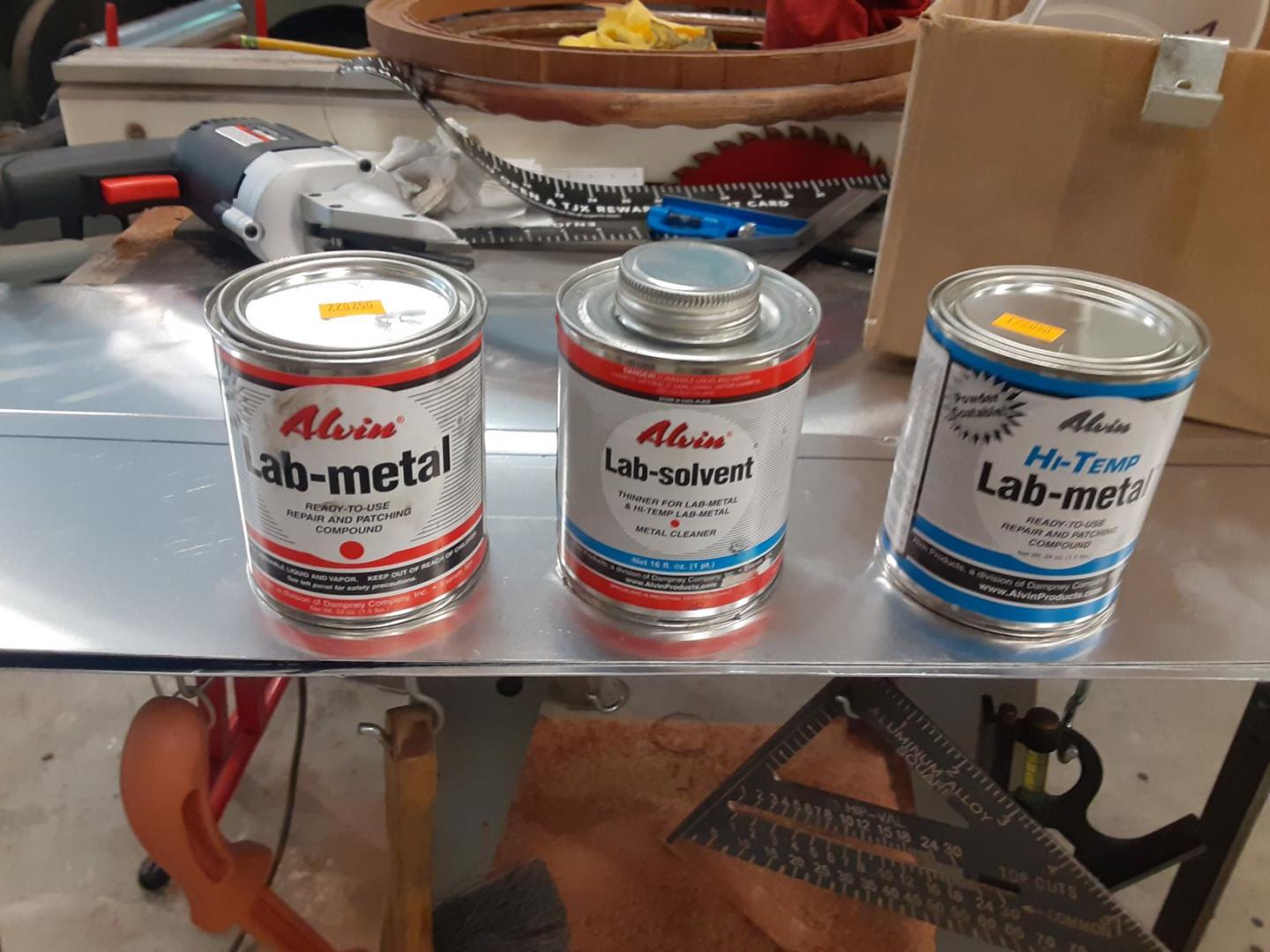- Home
- About Us
- Join/Renew
- Member Benefits
- Member Pages
- Log In
- Help
- Museum Store
Tagged: Labmetal
I have been interested in getting some parts powder coated. Our business uses a powder coater for production and I have been tempted to throw a few brackets, plates. etc. in the next shipment.
One of the problems is what do you do about pits and other defects in the parts? Left unattended they will show up in the finished part.
Since the powder can be cured at up to 400 degree F, you can’t use normal fillers as they will blister or peal at that temp.
Enter Lab Metal. This is an air dry epoxy. Just stir it up and spread it onto a surface (it’s like tooth paste out of the can) and it hardens in about 1 hour.(24 hr for the High Temp). You have to use a solvent on top of the remainder of the can to provide a seal from the air when you close the can and you can thin it with the solvent and use it like paint.
It comes as Standard, good to 350 degrees F and in High Temp that is good to 1000 degrees. Standard just air hardens in about an hour and the High Temp needs to be air hardened and subjected to a baking cycle. They even reference using the HT to fill cylinder wall scores, pits and scratches. Hummm
It is aluminum based and sands and files pretty easy. I am working on a couple projects and will report back the results.

Bill, have you had results with the lab metal? I will be doing my wheels in the not too distant future and want to powder coat. Is the regular labmetal sufficient?
Thanks, Jim
They recommend Hi Temp Labmetal which has to have a bake cycle. I am in Colorado, but I will check on it when I get home.
There is a procedure for plating over it also.
I used regular Labmetal to fill pits in a spare wheel for powder coating. It came out fine, no high temp cure cycle needed. I didn’t want to use Hi temp since I didn’t think my wife would be keen on me baking chemicals in the kitchen oven. The specs say it can go to 350 with one time 20 minute exposure to 425. My powder coater indicated many used JBWeld also. They use Prismatic powders that have a cure temp of 350, but said they go to 400.
The stuff is hard to work, being very thick and harder than body filler for sanding.
Jim,
Glad you had good results. Thanks for being the guinea pig.
You can thin it with the solvent to whatever viscosity you want. Tooth paste to pourable.
Bill
